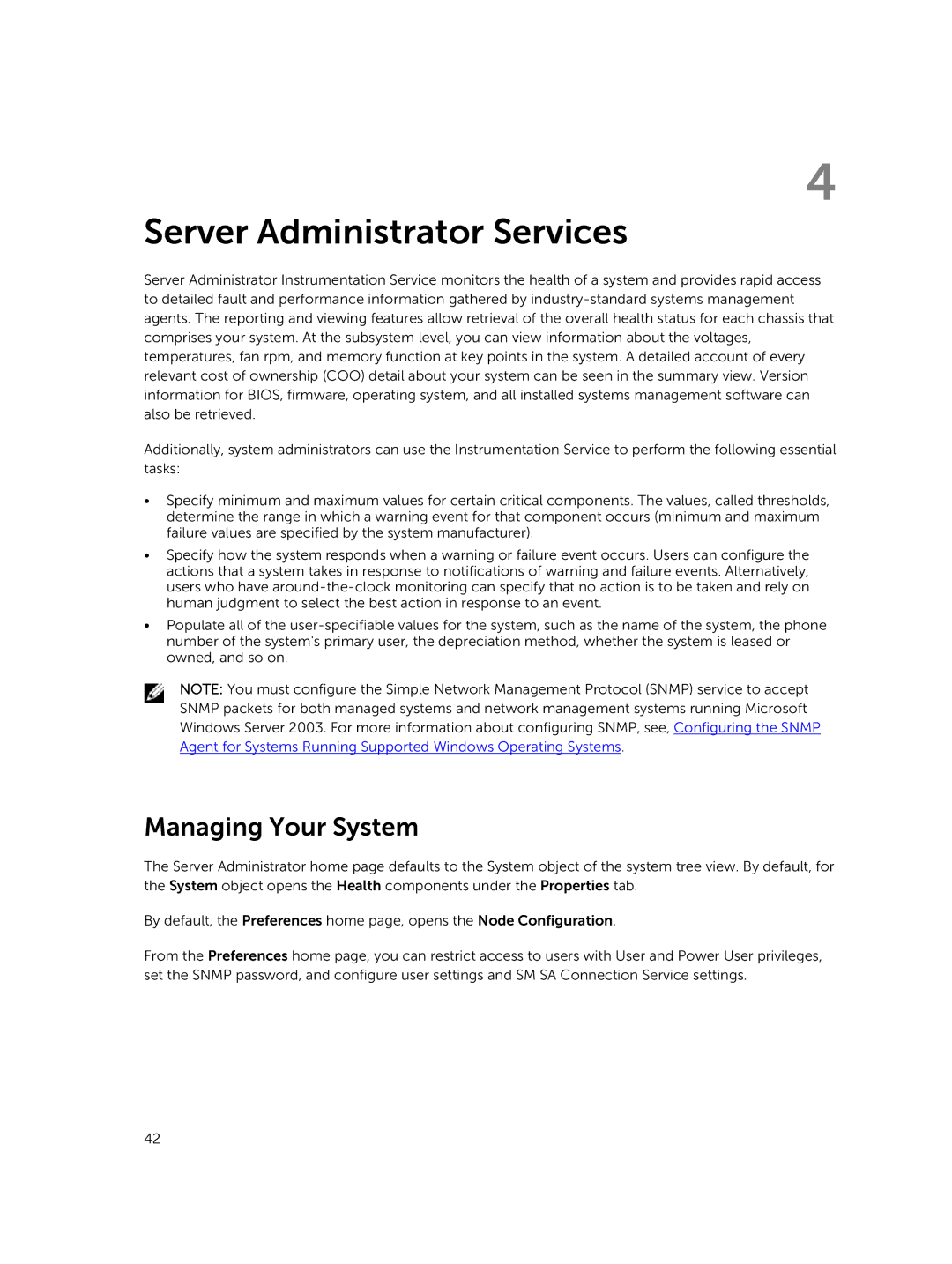4
Server Administrator Services
Server Administrator Instrumentation Service monitors the health of a system and provides rapid access to detailed fault and performance information gathered by
Additionally, system administrators can use the Instrumentation Service to perform the following essential tasks:
•Specify minimum and maximum values for certain critical components. The values, called thresholds, determine the range in which a warning event for that component occurs (minimum and maximum failure values are specified by the system manufacturer).
•Specify how the system responds when a warning or failure event occurs. Users can configure the actions that a system takes in response to notifications of warning and failure events. Alternatively, users who have
•Populate all of the
NOTE: You must configure the Simple Network Management Protocol (SNMP) service to accept SNMP packets for both managed systems and network management systems running Microsoft Windows Server 2003. For more information about configuring SNMP, see, Configuring the SNMP
Agent for Systems Running Supported Windows Operating Systems.
Managing Your System
The Server Administrator home page defaults to the System object of the system tree view. By default, for the System object opens the Health components under the Properties tab.
By default, the Preferences home page, opens the Node Configuration.
From the Preferences home page, you can restrict access to users with User and Power User privileges, set the SNMP password, and configure user settings and SM SA Connection Service settings.
42
